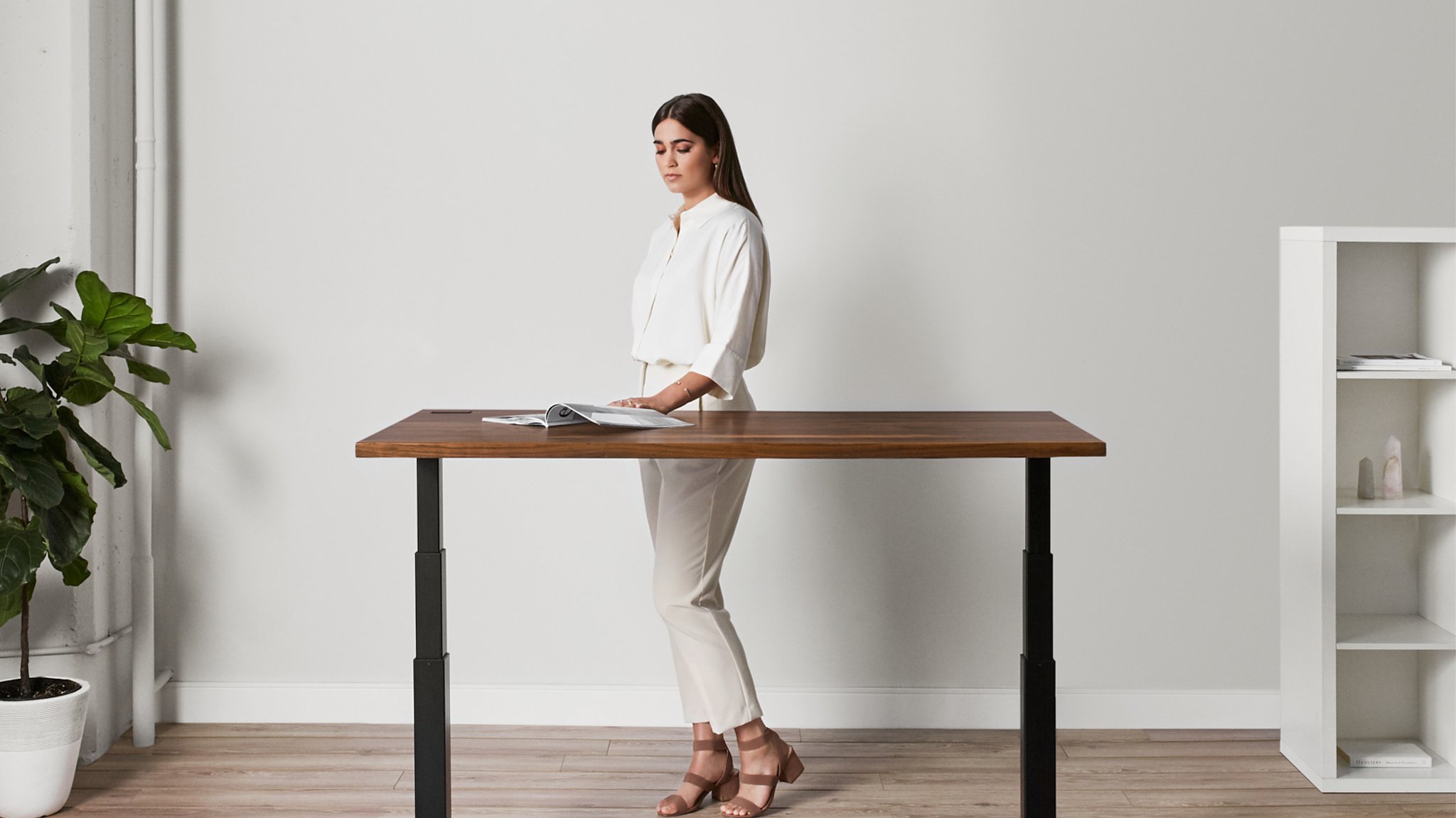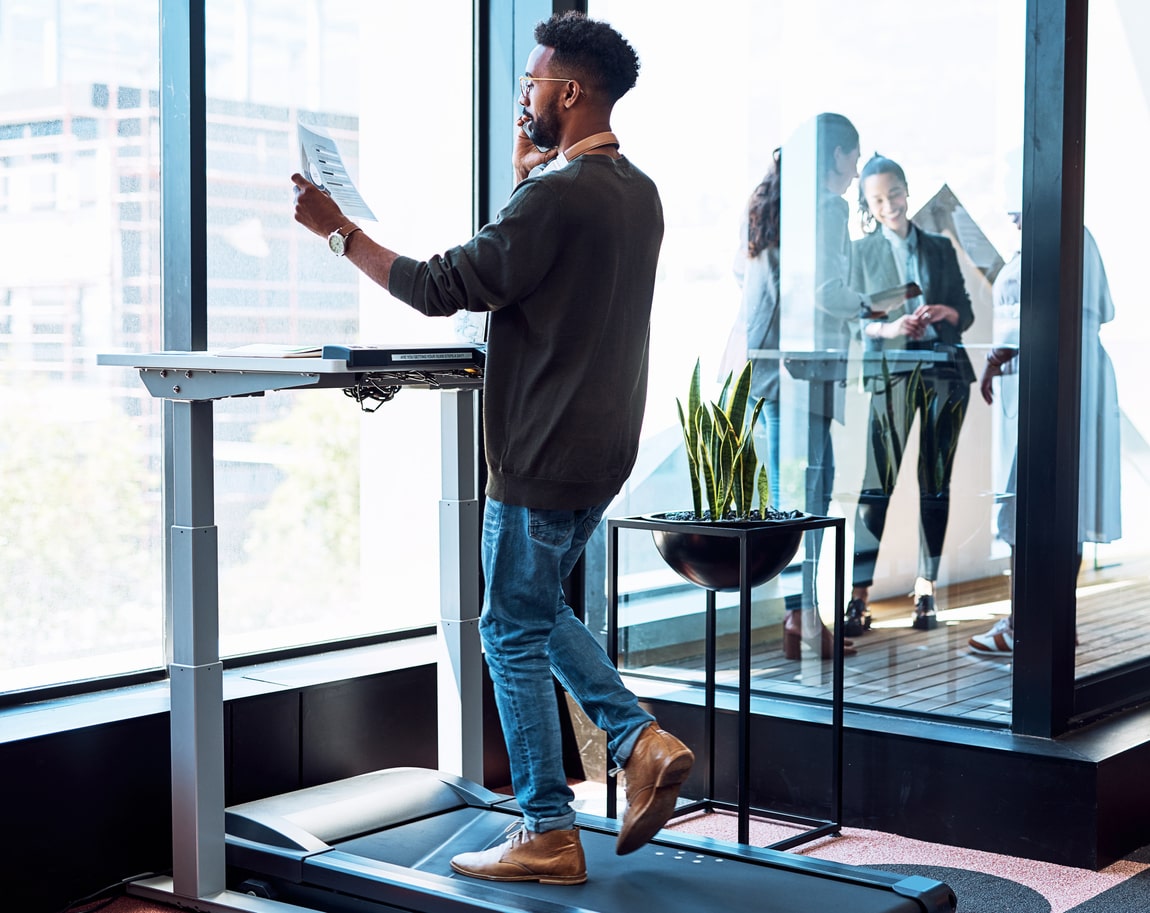
Because everyone is different, ergonomics isn’t an easy aspect of science – especially in a crowded office where tables and chairs need to be tailored to each person. The best thing about an adjustable standing desk, whether at home or in the office, is that you can choose the perfect height for you.
A height-adjustable desk allows you to change the tabletop to your preferred height based on the task you are doing, as well as what’s healthy for your back, shoulders, neck, eyes, arms, and legs. Learn how to calculate standing desk height below.
How to Set the Right Desk Height for You
Generally, you should set your desk to be at the same level as your bent elbow. So, if you are 6’0”, your sitting desk should be around 27” from the ground, and standing height at about 43.5”. Again, this will be slightly different for everyone, even those of the same height – so be sure to test and trial what works for you.
Here are the steps to calculate the best desk height for standing:
- Stand up straight with your head upright and shoulders slightly back.
- Keep your elbows by your sides while extending your forearms straight out at a 90-degree angle.
- Adjust the desk so that your fingers slightly touch the tabletop.
These guidelines can also be used for sitting – use the same steps when sat in front of the table.
This rule of the thumb principle may not always apply depending on the task at hand, so you’ll need to evaluate your body and establish the length that allows you to maintain proper posture, support your limbs and limit uncomfortable movements.
The type of work you are doing should determine the desk height. If you are doing tasks that require up-close attention, such as building models or examining collections, you may want the surface to be higher so that it’s close to your eyes, so you don’t have to bend. If you are doing crafty activities where you need to support your arms, then you can position them to the level of your elbows.
When using a computer monitor, adjust the screen so that the top of the monitor is at or just below your eye-line to prevent neck strain.
The Bottom Line
These are general guidelines for making your working set-up comfortable, though things will be slightly different for every person. Experiment with your desk and monitor height to find the best solution for you.
The Proper Way To Use A Standing Desk
Ultimate guide for setting your desk
“Remember, everyone is different and should be able to adjust their workspace to their own needs. Some of us have longer arms, or shorter legs. Some of us have weaker knees, or flatter foot arches. No matter what your specific needs are, the advantage of height-adjustable desks is their versatile nature – they can be customized to suit everyone.”




